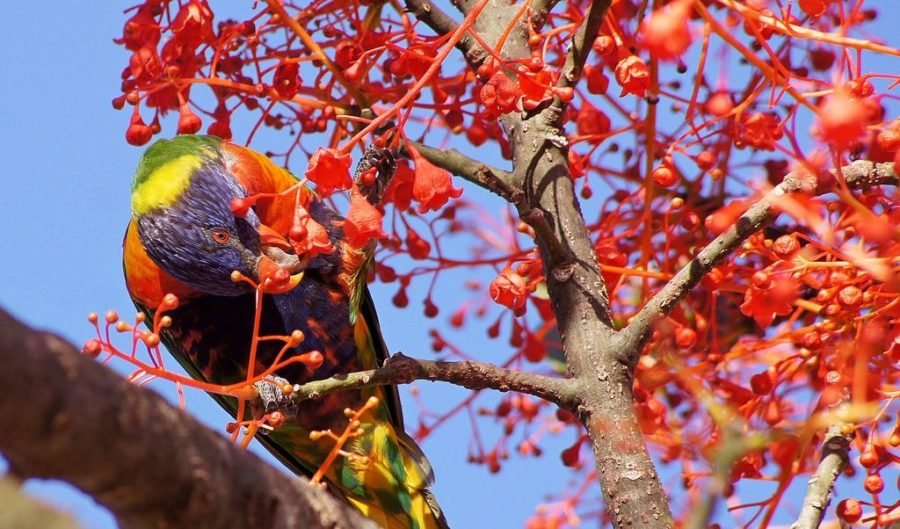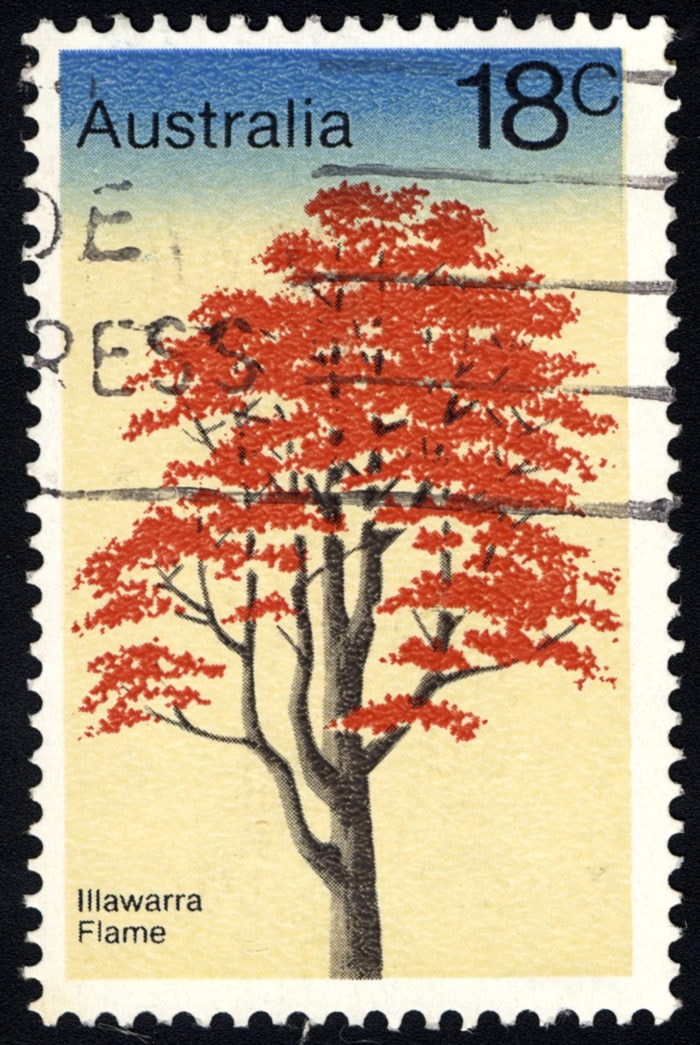Everything you need to know about our iconic Illawarra flame trees

YOU MAY HAVE heard the song Flame Trees by Cold Chisel a number of times, but do you know what it’s really about? Well, it’s an ode to the Illawarra flame tree (Brachychiton acerifolius). A bright red flowering tree that easily “blinds the weary driver”.
These trees have an ancient history in Australia. According to Russell Barrett, a systematic botanist at the Royal Botanic Garden Sydney, the inner bark of flame trees was used by Aboriginal Australians for making string, fishing nets and traps, as well as being a food resource.
“The large seeds are rich in protein and taste rather like raw peanuts,” Russell says. “They were commonly cooked before they were eaten to ensure that all the irritating hairs were burnt off.”
Found along the east coast of Australia, the flame tree is relatively common in pockets of subtropical rainforest from the Shoalhaven River on the south coast of New South Wales to Cape York in far north Queensland.
“I love seeing flame trees flowering in their natural setting – scarlet masses dotted around a sea of dark green rainforest,” Russell says. “A great place to see them is to look down from the heights of Point Lookout, near Ebor on the New England Tableland.
“Closer to Sydney, natural stands can be found at the Minnamurra Rainforest Centre and along the Illawarra Escarpment, most commonly flowering during the summer holidays.”
That these gorgeous trees throw spectacular colour around summer time, has meant they’re beauty is often compared to that of the jacaranda tree (Jacaranda mimosifolia). Last year, we posed the question, Jacarandas: icons or pests?

“Both trees are very showy when in flower because they are leafless at the time, and both produce large numbers of flowers with a sharp colour contrast, maximising their attractiveness,” Russell says.
The flame tree is often hailed as a good native alternative to the jacaranda tree. However, some gardeners, including Jennifer Stackhouse from GardenDrum, an international gardening magazine, prefer to plant both.
When Jennifer moved to the Hawkesbury region, north-west of Sydney, her backyard already had a jacaranda so she decided to add a flame tree, creating a close contrast between the two.
Jennifer planted the flame tree around seven metres from the trunk of the jacaranda hoping that, over time, their branches would mingle. “It would be lovely to see more native trees planted in gardens but there are other options that may be better choices as the flame tree is a large tree and probably too big for many small gardens,” Jennifer says.
There’s recently been work to develop flame trees with a broader colour range, consistent size and spread, and more reliable flowering. “The flame tree can be grown in a range of warm climate areas, so certainly offers an alternative to the jacaranda,” says Russell.
“It does not spread as widely, so may offer a little less shade, though the wide leaves do offer a deep shade, and it is less drought-tolerant, so it does not suit all situations. Some recent hybrids involving this species are tolerant of a wider range of climates and soils.”
The association between jacarandas and flame trees is best linked by that Cold Chisel song though.
“The song is based on one of the band’s childhood memories of the trees near Grafton, NSW. This also links the flame tree directly to jacarandas, through Grafton’s annual Jacaranda Festival [held in November each year], and both trees have a prominent place around the town,” says Russell.

